Have you noticed how online magazines ask you your preferable genre of reading? Imagine you’ve subscribed to some weekly lifestyle magazine app for articles on gardening and recipes. However, despite making your preferences clear, you receive promotional emails which have nothing to do with what you go to that app for! Also, the related articles do not match your choices. You unsubscribe. You’ve got many options out there, haven’t you? There goes the magazine’s customer retention for a toss!
What happened here?
The magazine lost a reader. It acquired you but couldn’t keep you with them. You could have become a potentially high-value customer enrolling for their premium paid content. With time, you would have even explored other genres. But you felt your initial preferences weren’t valued. Your experience on the app wasn’t smooth, so you left.
The magazine failed to retain you.
Product managers have realized that customer retention is equally, or in fact, more rewarding than customer acquisition. While customer acquisition builds brand attention, customer retention builds loyal and valued customers who stick with you. It develops a lifelong relationship between a brand or a product and customers.
Acquisition without retention is like filling a bucket of water that has holes. All you’ll get is a leakage!
Ankur Gattani, VP – Growth, and Marketing at WebEngage, recently conducted an interesting session for The Product Folks, helping aspiring Product Managers demystify “Retention” as a subject.
In the session, Ankur sheds light on the 101s of retention and the key to substantial business growth that drives revenue.
- What is retention?
- Why is retention essential?
- When do you pick the retention tool?
- How does retention drive acquisition?
- CAC: Customer Acquisition Cost
- GMV: Gross Merchandise Value
- CM: Contribution Margin
- LTV or CLTV: Customer Lifetime Value
- The Treadmill Logic
- How do you reduce customer churn and increase retention?
- Personalization
- How essential is retention for Product Managers?
What is retention?
Retention is a form of marketing that creates engaged customers who return to your brand to shop again. While most product managers focus only on the acquisition of countless new customers, retention marketing, on the other hand, helps you focus on the profitability of those you already have.
Why is retention essential?
Simply put, retention increases your customers’ lifetime value (hold on, we’ll come to that soon) and boosts your revenue. The best perk is, it also helps your brand build a sustainable relationship with customers.
When do you pick the retention tool?
From Day-Zero. Customer retention is not something you do when you need it. It is something you do regardless. Let’s say you started an online brand for herbal skin products. You acquired four customers on the debut day and moved on to earn six more on day two without paying much heed to the four you already have. Then, you acquire five new more on day three. However, one fine day when you look at the data of your orders, all you see is a vague list of customers who placed an order once but never reordered again.
If you were adding an average of five customers every day, you should have a customer base of around 150 in a month. But since there was no retention, you barely have 11-20 customers left. Leakage in the bucket, remember? Retention multiplies your customer base and compounds acquisition efforts.
When do you pick a customer retention tool for your business? Answer- From DAY-0! Read more - via @webengage Share on XWith this, we land to the ‘H’ of retention:
How does retention drive acquisition?
Think about all of the money you spend driving customers to buy your products. Though it works, there’s no guarantee that the same customers will continue to make purchases from you. Retention concretizes loyalty amongst current customers, and loyal customers only create more customers.
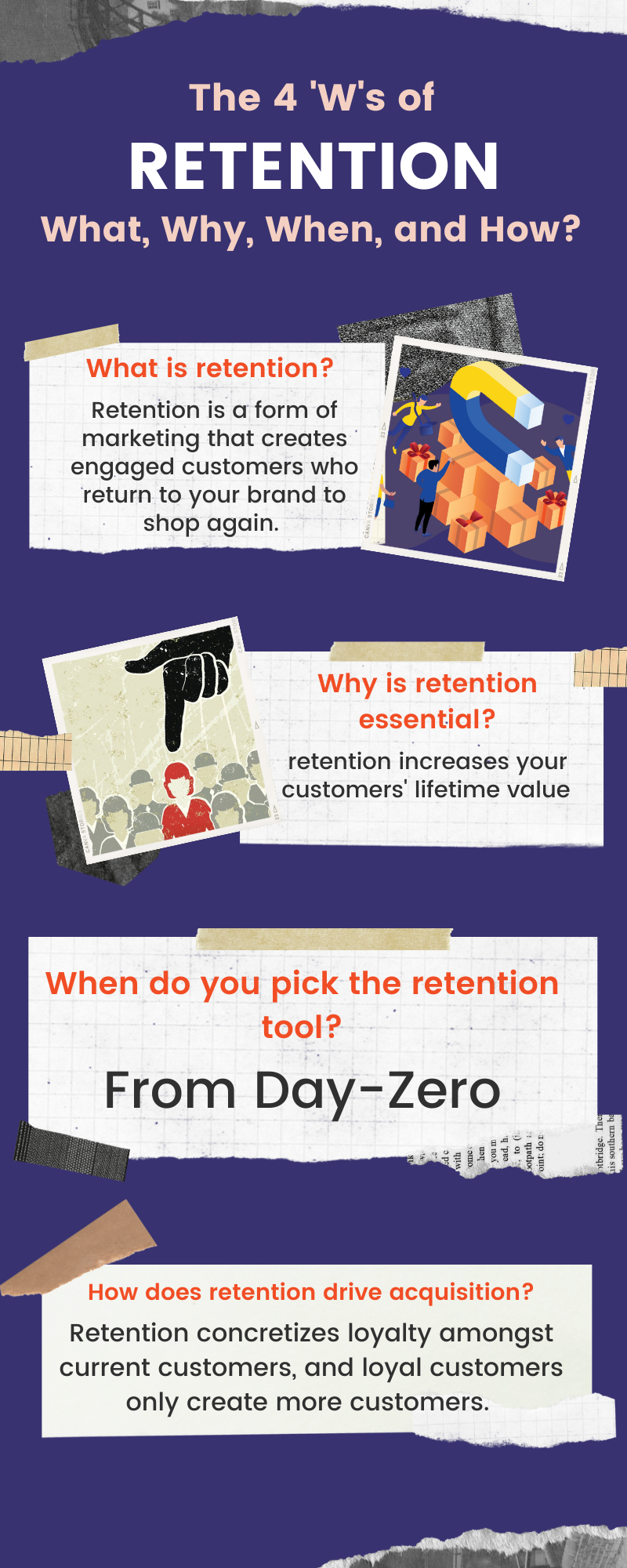
CAC: Customer Acquisition Cost
It is the cost of convincing a potential customer to buy your product. In simple words, it is the money a company spends to get a new customer. It is a crucial metric used alongside customer lifetime value (LTV) to weigh the value generated by the new customer. We’ll come to customer LTV later.
Understanding the cost to acquire a new customer is essential to scrutinize your return on investment in marketing. Intrinsically, to calculate CAC, you add up all the costs associated with amassing new customers and divide that amount with the number of customers you acquired.
GMV: Gross Merchandise Value
It is the total amount of sales a company does over a specific period. Calculate GMV before deducting the accrued costs: marketing/ad costs, delivery costs, and discounts. This metric is a comparative financial metric – enables businesses to review the sales value of one period vs. another.
CM: Contribution Margin
The contribution margin is sales less its variable cost. It is contributed as the selling price per unit minus the variable cost per unit.
LTV or CLTV: Customer Lifetime Value
CLTV is our favorite. It is the overall contribution margin from a single customer throughout his lifetime. It is the calculation of the value your relationship with a customer can bring to your business.
This metric helps you channel your marketing efforts to serve the existing customer with a more satisfactory experience. A seamless experience leads them to deepen their relationship with you and spend more money on your products/services.
Bonus Read – We’ve got 17 customer retention metrics you need to track, and how to calculate them.
The Treadmill Logic
Suppose you acquire a set of expensive customers in month A. Out of those, 80% are churned in month B (Churned: You lose them). The acquisition cost is a fixed cost throughout the cycle; the amount is 10k for each month. In month C, you lose 10% more, and the remaining 10% in month D.

You have been investing the same amount in acquiring new customers, but the active customer base (who spend money on your services or products) gradually decreases in the subsequent months. While you get new users, you continue to lose who you already have; you aren’t compounding it. All you have is 0% of loyal customers.
Thus, you will likely see customer churns with no retention program in place despite investing a substantial amount in acquiring customers.
How do you reduce customer churn and increase retention?
Welcoming a customer back is good, but remembering some essential details of their preferences is better. It’s called personalization.
Personalization helps the brand establish an exclusive relationship with customers. Leveraging big data is essential to identifying and understanding consumer behavior through frequent purchases, preferences, and category affinity. One simple cruise to personalization is via cohorts.
Cohort Analysis: A cohort is a set of grouped users/customers that share common characteristics. For example, people who discovered your brand via an ad on Facebook are the ‘Facebook Cohort.’ Customers born in 1980, you may call it the ‘Birth Cohort,’ etc.
Cohort analysis enables an organization to recognize crucial trends and patterns across the life cycle of a user/customer. It dissects large volumes of complex data into related cohorts and helps businesses determine average order value (AOV). Gauging AOV (also a cohort) helps in identifying high-value spenders. This helps in targeted marketing campaigns for retention purposes.

A systematic Cohort Analysis also arms brands to examine the depth of category/product penetration. Category/product penetration refers to the extent of product or service used by customers compared to the total estimated market.
Other models that have been in use as a cohort to calculate CLV are the Recency, Frequency, Monetary (RFM) Analysis.
RFM analysis is based on the Pareto principle (the 80/20 rule). It states that 80% of the business comes from 20% of the clients. Understanding that 20% of clients is highly crucial.
If 80% of your business comes from 20% of your users, retaining these 20% becomes the foundation for future growth! Read more - via @webengage Share on XPersonalization
Personalization is not just about names; it’s about relevance!
Imagine you are in a flight; Amitabh Bachchan is on your left, and your right is Alia Bhatt. If you manage to not faint, you’ll try to strike a conversation. However, if you end up saying, ‘I am a huge fan’ to both, believe us, you are wasting theirs as well as your time. You’ll have to personalize your ice-breaker for both!
Personalization is a data stack of your customer profile, behavior, and journey. Using these pieces of data (data stack), you can effectively embroider a personalized experience via different channels (messages, emails, push notifications) for your customers. These personalized experiences can be triggered whenever your customer nudges an event.

For example, a customer (let’s say, ABC) added a pair of shoes to the cart and left it without checking out. The event – adding a product to the wishlist – triggers a personalized communication with the customer reminding him (maybe, after two days), ‘Hey ABC, the shoes in your cart are missing you!’
A pertinent personalized message sent at the right time, at a suitable frequency, via the right channel can make ABC come back and buy those shoes!
Customers expect personalization. It makes them feel cared for and valued. They expect content, messaging, and experiences to be tailored to their interests. Thus, when they get it, they cherish it and stick to it. And thus, you retain them.
Hyper-personalization is the future, and the future is NOW! Read more - via @webengage Share on XHow essential is retention for Product Managers?
Retention for product managers can be a game-changer to achieving growth for brands and their professional prowess. A product manager is the field-marshal in the battlefield of marketing. Having a retention program in place ensures victory, and an astute PM would make sure of that.
Improving customer retention and building a firm customer base doesn’t happen overnight. It takes strategy, consistency, and most importantly, patience to achieve the revenue and growth milestones for the business and as a product manager.
To sum up…
Making customer retention a crucial part of your business model ensures a consistent and sustainable growth. Provide excellent service, make customers’ lives easier, and they’ll likely turn into advocates for your brand. We promise!
Take a demo with WebEngage today to implement these use cases, boost sales, and skyrocket your revenue.




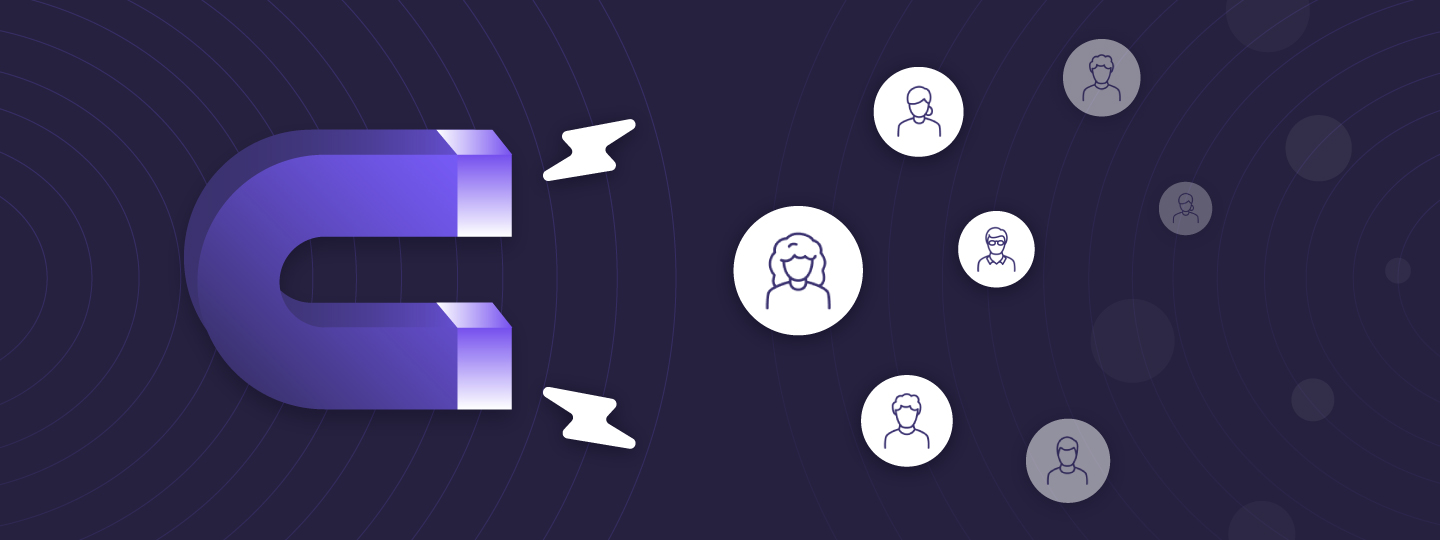

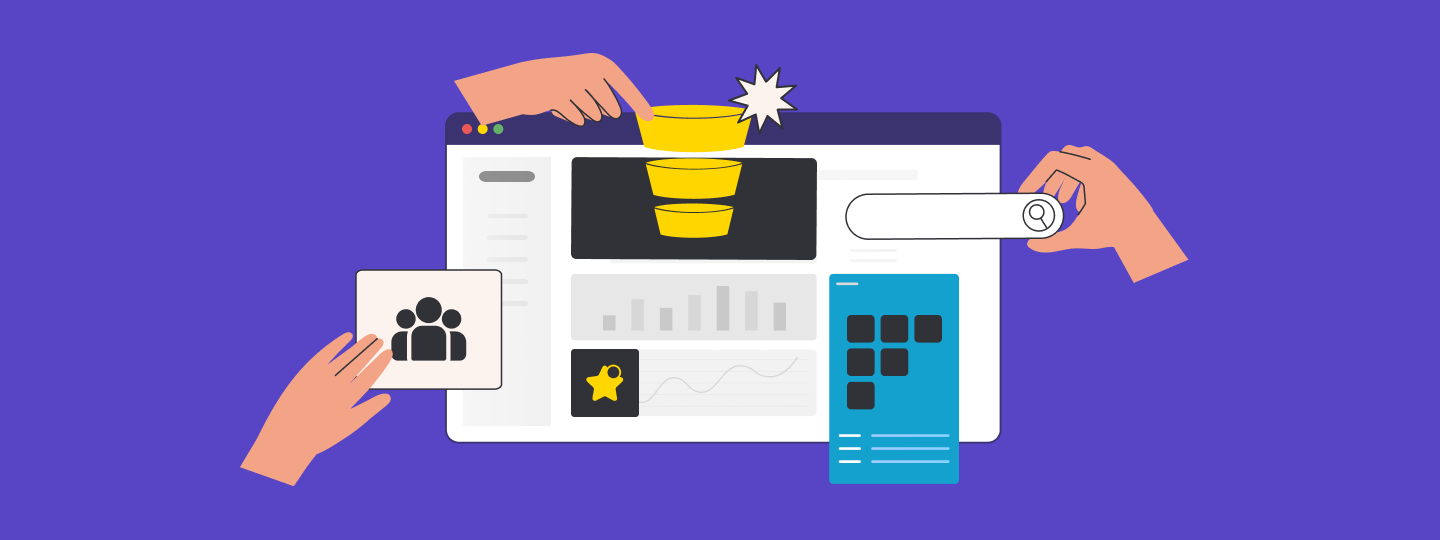
 Prakhya Nair
Prakhya Nair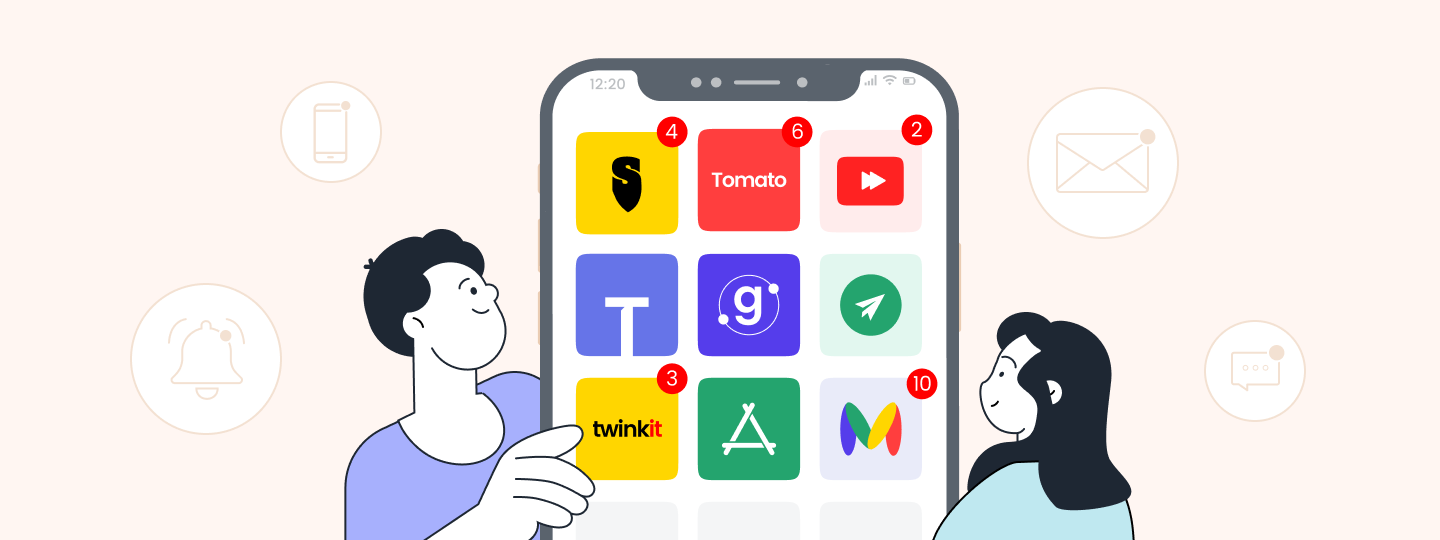
 Diksha Dwivedi
Diksha Dwivedi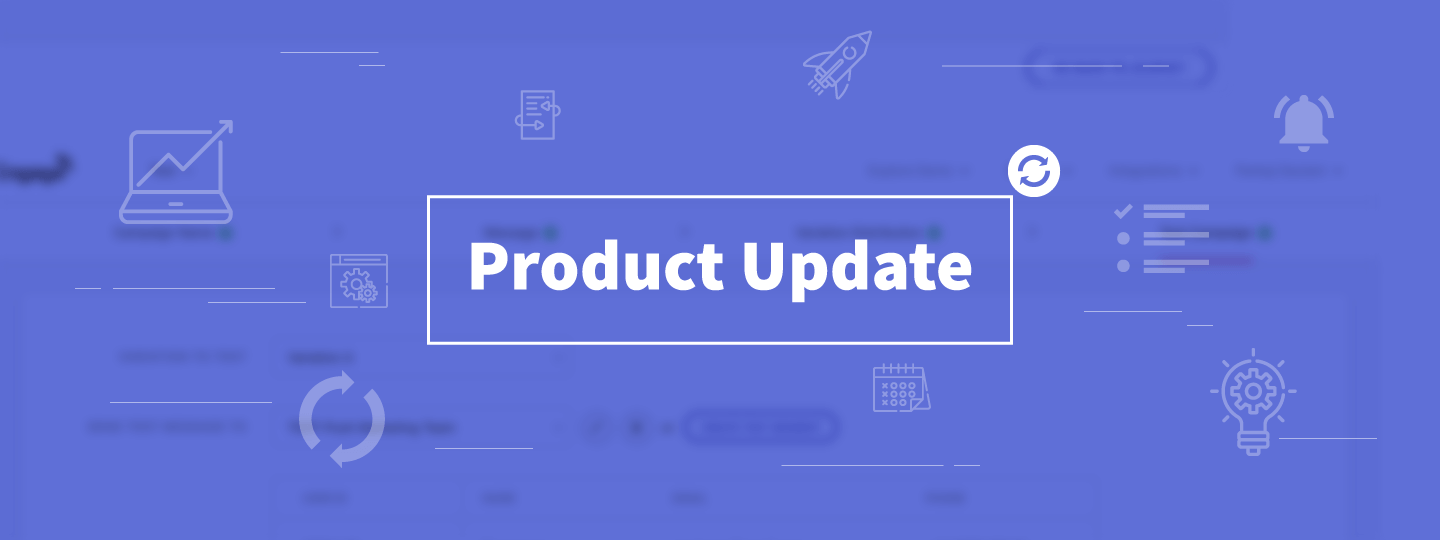
 Harshita Lal
Harshita Lal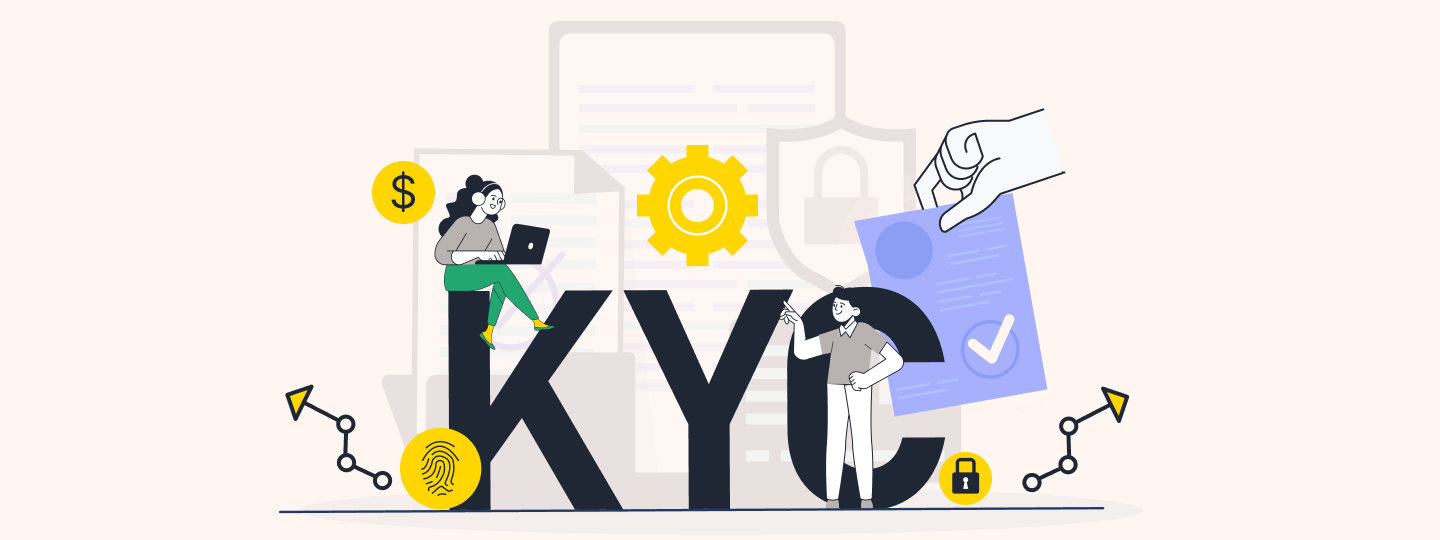
 Rohit Taneja
Rohit Taneja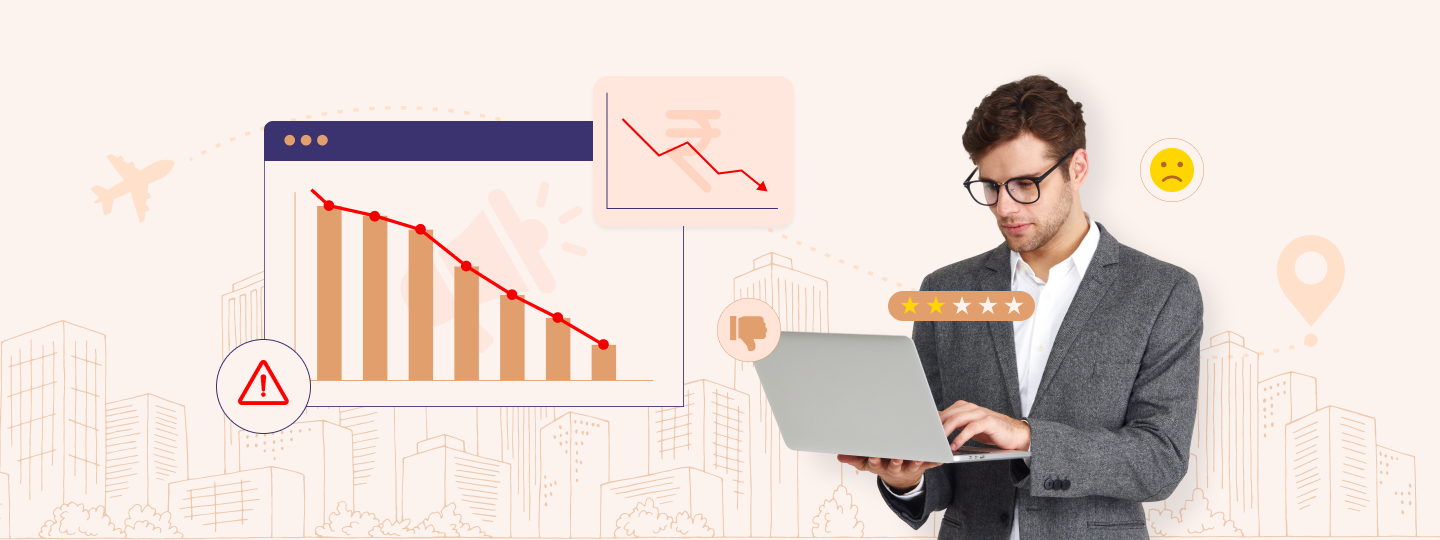
 Vanhishikha Bhargava
Vanhishikha Bhargava